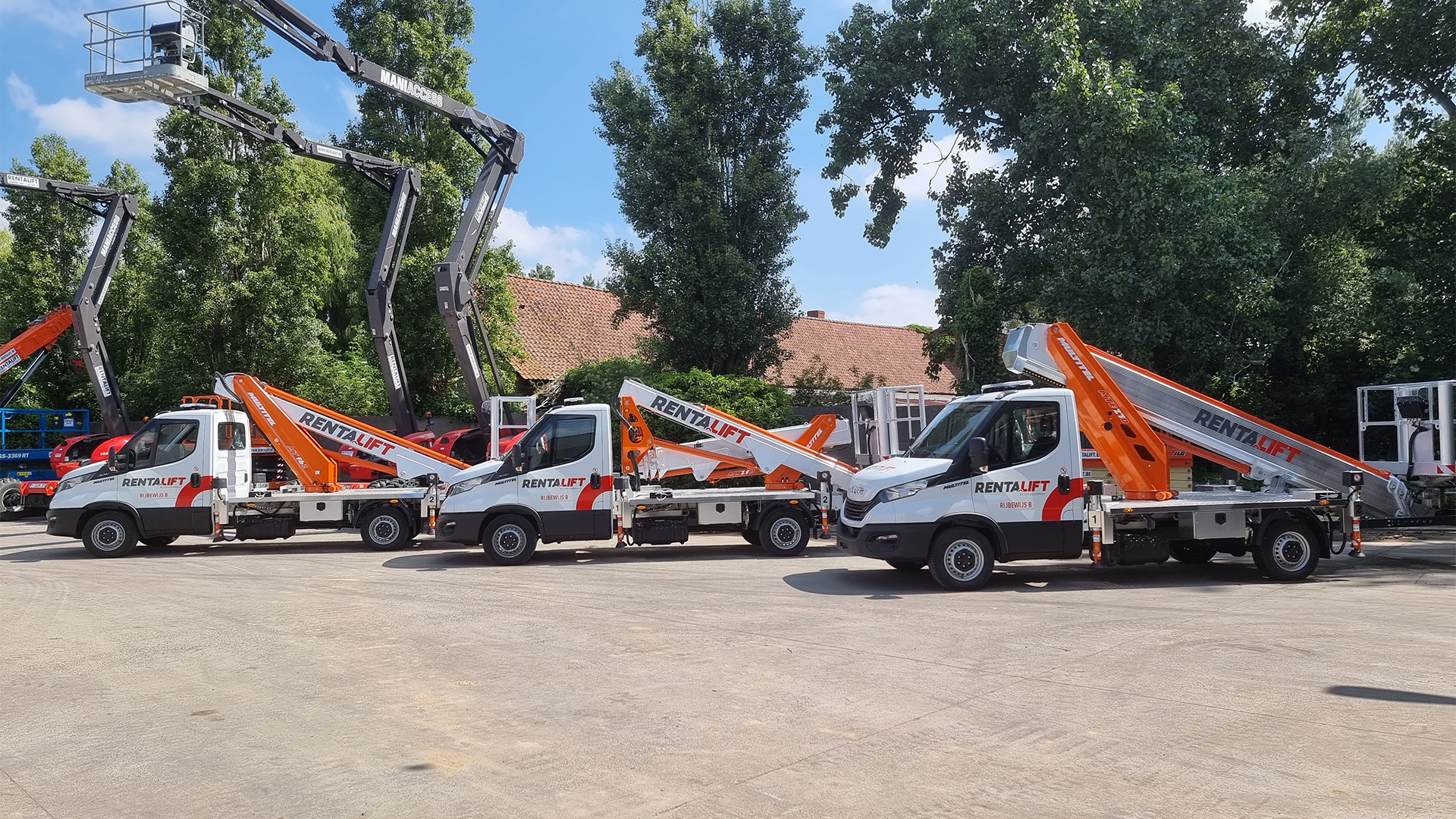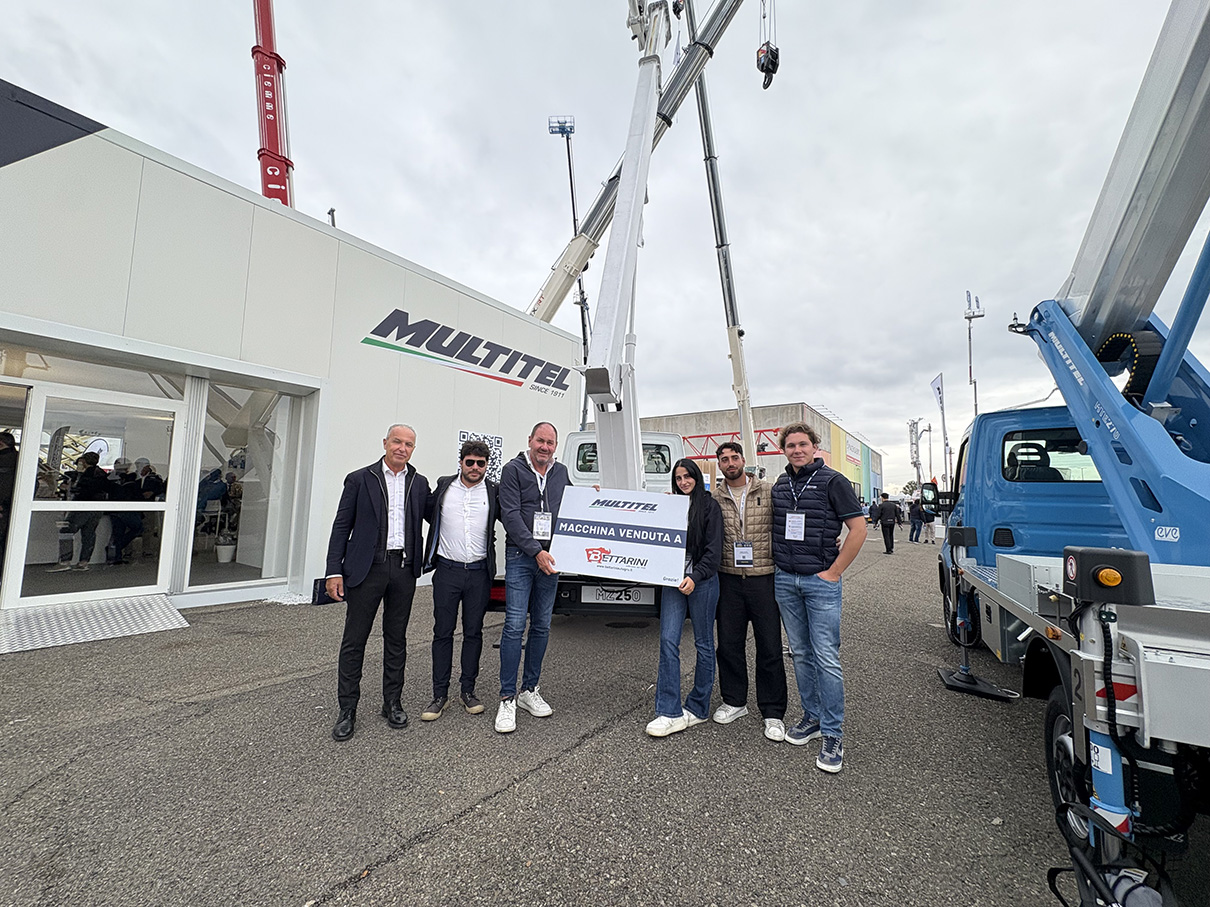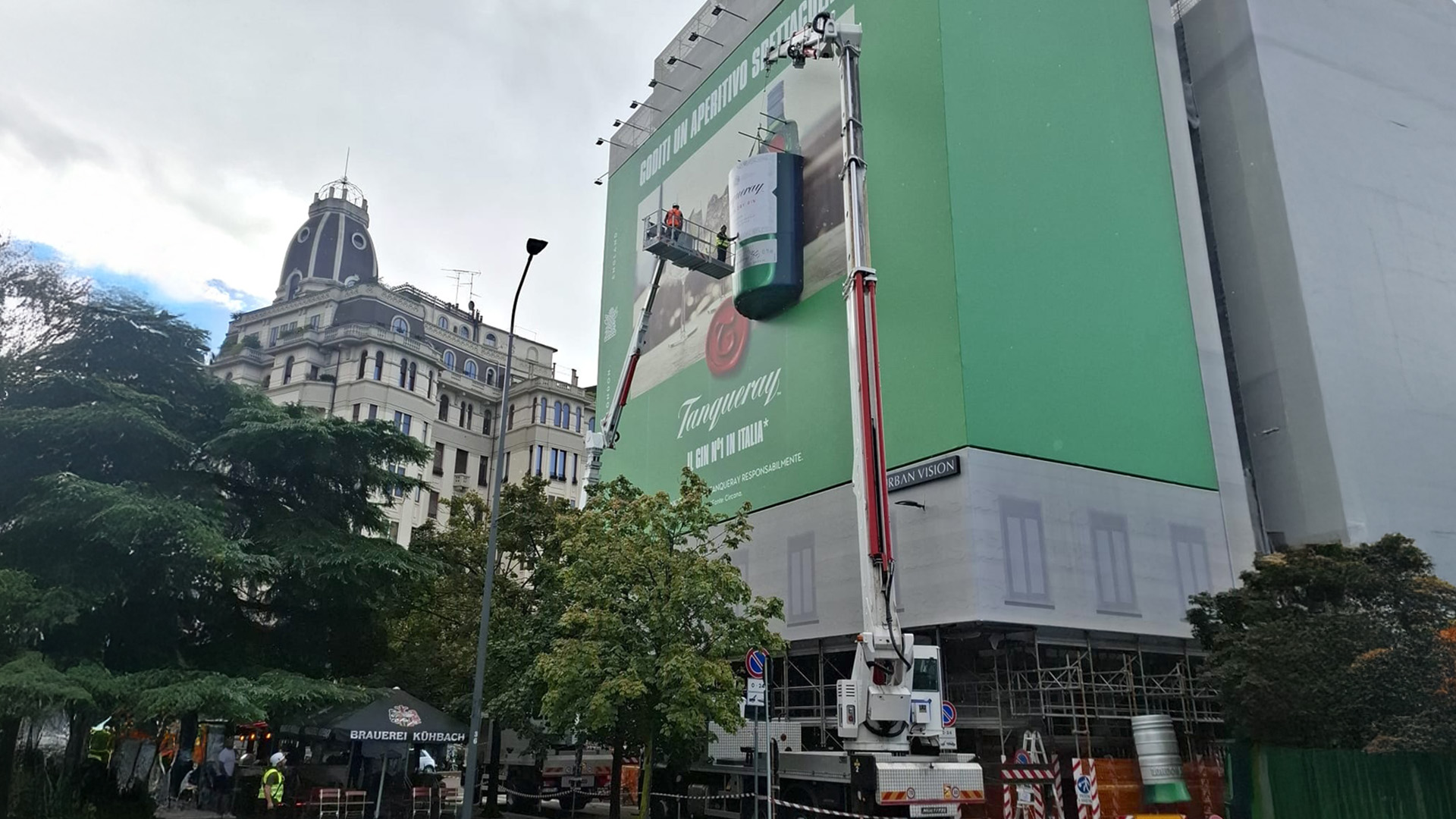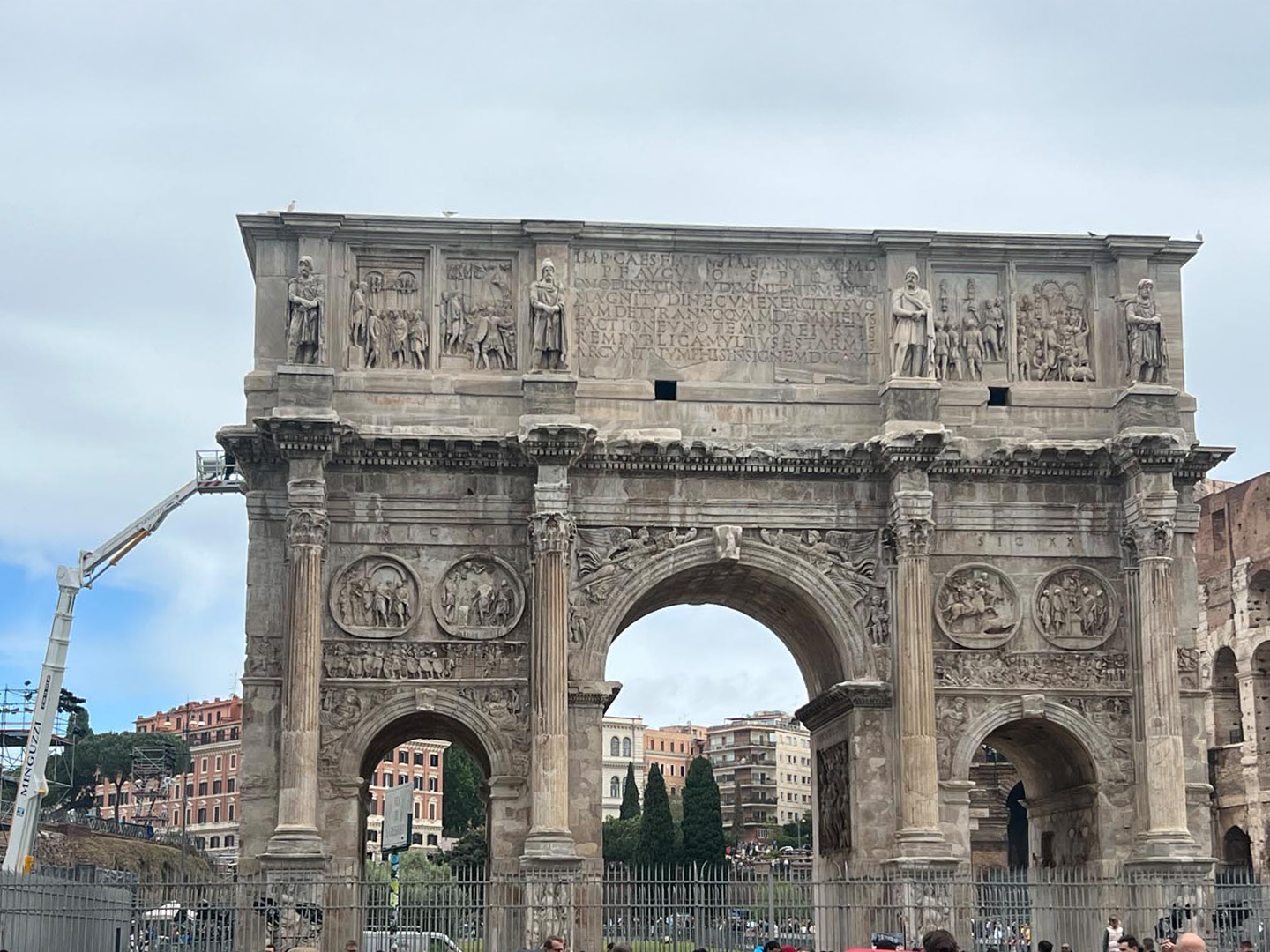The installation of a lightning protection system on the Arch of Constantine, one of the most iconic monuments of Imperial Rome, was recently completed in the heart of the Colosseum Archaeological Park in Rome. Standing along the ancient triumphal route (between the Circus Maximus and the Arch of Titus), the Arch of Constantine is the largest surviving triumphal arch and commemorates Constantine’s victory over Maxentius on October 28, 312 BC, following the Battle of the Milvian Bridge. Roughly 25 metres high, it was built partially using materials and architectural elements from earlier imperial monuments.
The delicate task of installing the lightning rod—authorised and supervised by the Italian Ministry of Culture– was carried out by Minguzzi Srl, a company that brought its know-how and fleet of vehicles to the operation, including the Multitel MJ 375 truck-mounted aerial platform. The telescopic platform proved essential for working safely on such a significant structure, thanks to its long outreach, high lifting capacity, and precise movement control even in historically sensitive environments.
Stefano Minguzzi, representing the fourth generation of the historic Minguzzi company, joined the business in 1985, building on the pioneering legacy of his great-great-grandfather. Today, alongside his son Mattia, he leads a team of around 25 people, offering clients a fleet that includes truck-mounted cranes, aerial platforms, and spiders—everything needed for lifting and handling operations. Among the company’s most prestigious projects are the transfer of Michelangelo’s Pietà to the Metropolitan Museum in New York, and the return of the equestrian statue of Marcus Aurelius to the Capitoline Hill—tasks that relied on advanced equipment and procedures, earning them the trust of institutions such as the City of Rome, the Archaeological Superintendence and the Vatican Museums.
Speaking about the Arch of Constantine project, Stefano Minguzzi stated: “This isn’t just praise – the MJ 375 truly proved to be an extraordinary machine: the balance between height performance, impressive outreach, and movement precision—combined with the reliability of Multitel’s service and the professionalism of Maurizio Bussi—were key reasons we chose it for such a delicate intervention in a prestigious site like the Arch of Constantine.”
The Multitel MJ 375 telescopic platform—mounted in this case on an 18-ton IVECO truck—was perfectly suited for the complex urban operation on the Arch of Constantine, where maximum adaptability, precision, and respect for the monument were crucial.
This platform offers a maximum working height of 37.5 m and a horizontal outreach of 25.80 m, supporting a basket capacity of 120 kg at full outreach, 280 kg at 24.30 m, and up to 500 kg at 20.80 m. The turret’s 360° continuous rotation, the self-levelling extendable basket (from 2.50 to 3.80 m) with 180° + 180° rotation, and telescopic jib allow the operator to get around any obstacles and be positioned precisely at the work area. Proportional electro-hydraulic controls ensure smooth movements and precise positioning, regulating the speed of extending the sections and elevation, descent and rotation from control panels on the platform and at ground level. The clean boom design—which holds the piping and cables internally—avoids the risk of damage from obstacles or falling debris, and the platform is equipped with all mandatory safety and emergency devices in accordance with current regulations.
This intervention at the Arch of Constantine exemplifies the collaborative commitment of institutions and specialised operators in preserving and protecting Italy’s cultural heritage. The project stands as a concrete example of how technology and expertise can work hand in hand with heritage conservation, helping safeguard cultural treasures with full respect for their historical and architectural integrity.









